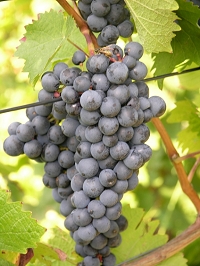History of Dornfelder

Dornfelder is a dark-skinned variety of grape of German origin used for red wine. It was created by August Herold (1902-1973) at the grape breeding institute in Weinsberg in the Württemberg region in 1955. Herold crossed the grape varieties Helfensteiner and Heroldrebe, the latter which bears his name, to create Dornfelder Helfensteiner.
Dornfelder received varietal protection and was released for cultivation in 1979. It was named in honour of Immanuel August Ludwig Dornfeld (1796-1869), a senior civil servant who was instrumental in creating the viticultural school in Weinsberg.
Dornfelder has become quite popular in Germany since it performs well under viticultural conditions which traditionally were seen as more suitable for white wine production. Traditionally, the red wines of Germany were mostly pale and light-bodied, but new breeds of dark-skinned grapes led by Dornfelder have allowed the production of more internationally-styled reds. Dornfelder has a depth of color, good acidity and the ability to benefit from barrique (barrel) aging and the associated oak flavors. In comparison to traditional red wine varieties of Germany, Dornfelder is easier to grow than Spätburgunder, has better resistance to rot than Blauer Portugieser (as well as deeper color, more powerful flavors and more tannin), has stronger stalks than Trollinger, ripens earlier than Lemberger, and achieves higher must weights, i.e., higher natural alcohol levels than most of these varieties. Dornfelder can be very productive, and yield up to 120 hectoliter per hectare, but quality-conscious producers typically keep yields much lower.
Higher-quality Dornfelder wines are velvety textured, slightly floral, often show flavors of plums, blackberries or cherries, and are typically oaked. Sometimes the wines have a hint of sweetness.
Dornfelder is the second most grown red wine grape variety in Germany. Steadily increased plantings throughout the 1980s and 1990s allowed it to overtake Blauer Portugieser in 2001. It has established itself in most German regions, and been particularly successful in Rheinhessen and the Mosel. In 2006, Dornfelder was grown on 8,231 hectares (20,340 acres) in Germany, and no longer has an increasing trend.
While Dornfelder has expanded, it has not threatened Spätburgunder as the most common red wine grape and as the dominating grape in most high-priced reds of Germany.
The only known synonym for Dornfelder is its breeding code Weinsberg S 341.